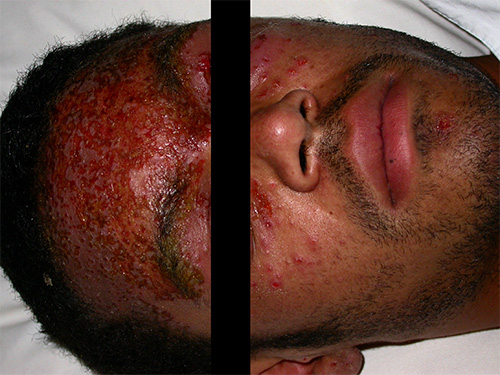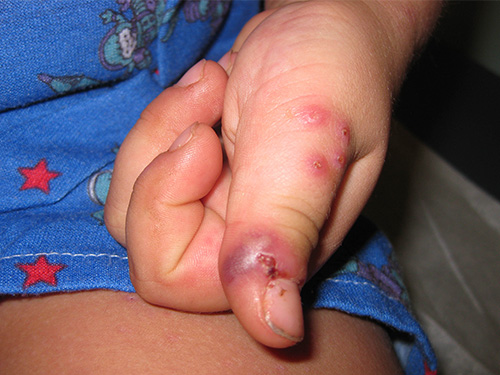Cutaneous manifestations of herpes simplex virus infection
Eczema herpeticum is a widespread herpes simplex virus (HSV) infection complicating a pre-existing skin condition, most often atopic dermatitis. Eczema herpeticum presents as an acute widespread eruption of vesicles or multiple crusted erosions; see here for a photo of eczema herpeticum. The patient may have had herpes simplex labialis (a cold sore). Fever and malaise may be present, and skin tenderness is more common than itching. Eczema herpeticum can spread rapidly, leading to severe morbidity and mortality if not treated with antiviral therapyWollenberg, 2003.
Presentation of eczema herpeticum in children is more likely to be severe than in adults, and is more likely to require hospitalisation if the eruption is generalised.
If eczema herpeticum is suspected, take a swab for HSV polymerase chain reaction (PCR) to confirm the diagnosis. While waiting for results of diagnostic testing, refer patients with moderate to severe symptoms and immunocompromised patients to hospital for prompt treatment with intravenous aciclovir and assessment for bacterial superinfection. Mild cases can be treated with an oral antiviral, as for a severe initial episode of oral mucocutaneous herpes in an immunocompetent patient.
Herpetic whitlow is a cutaneous HSV infection of the fingertip, resulting from mucocutaneous inoculation of the virus through a skin break. It can occur in children with oral mucocutaneous herpes who suck their thumbThe Royal Children's Hospital (RCH), 2020. Tender vesicular or pustular lesions develop with localised oedema and erythema. Fever and localised lymphadenitis may be present. See here for a photo of herpetic whitlow.
Treatment of herpetic whitlow may involve oral antiviral therapy as for a severe initial episode of oral mucocutaneous herpes in an immunocompetent patient.


